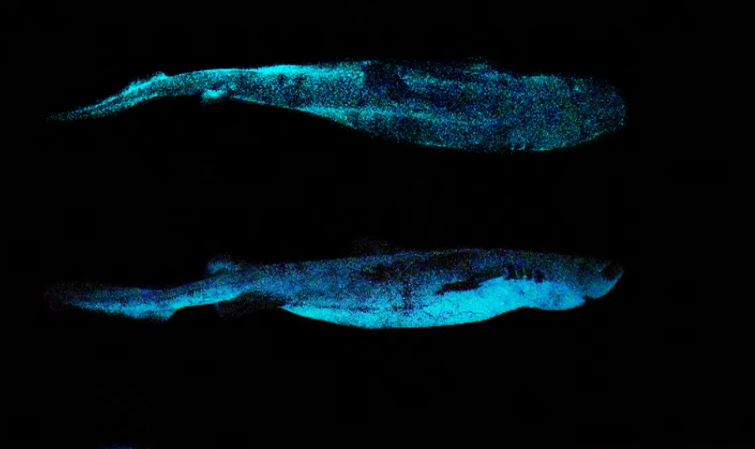Sharks are known for their fearsome hunting prowess. But researchers from the Catholic University of Louvain in Belgium have uncovered another fascinating trait that at least one shark species exhibits as well … it glows.
Published in the Frontiers of Marine Science, the university researchers, in conjunction with the National Institute of Water and Atmospheric Research in New Zealand, trawled down to depths of 2,600 feet down to pick up a kitefin shark that actually lights up in total darkness. This marks the biggest glow-in-the-dark species with a spine ever discovered.
The reason for the shark’s luminescence is peculiar. Whereas most species that glow do so because of their nervous systems, the kitefin shark uses “melatonin” (yes, the same stuff that puts us to sleep) to generate its luminescent qualities.
As reported in the study:
“[S}harks are the only known bioluminescent organisms to hormonally control light emission. For the studied species, researchers have demonstrated the involvement of several hormones in the control of light emission: melatonin (MT) triggers light production, while alpha-melanocyte-stimulating (α-MSH) and adrenocorticotropic hormones (ACTH) inhibit it.”
The lead scientist in the new discovery, Jerome Mallefet, is pleased with his new finding – but nonetheless still plans to continue his research to see if there are yet more species we don’t know about that light up the great depths.
Speaking to a New York Times reporter, Mallefet said, “‘Down there, there are glowing critters of different sizes, perhaps even larger than kitefin sharks, that we still know nothing about’… adding that with resource exploitation of the deep sea becoming increasingly widespread, it’s time to study this ecosystem before we destroy it.”
To read the full report, click here.
